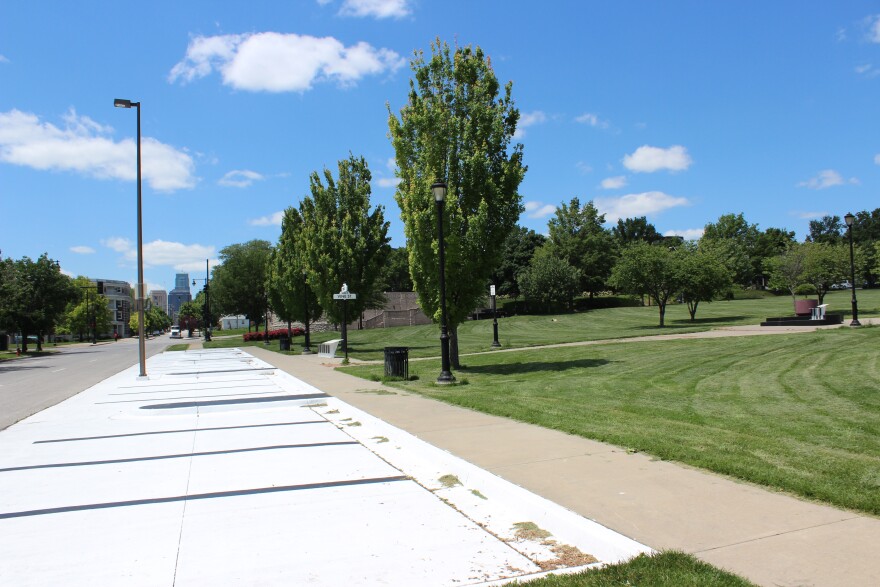The Kansas City street corner is immortalized in words known worldwide:
I'm gonna be standing on the corner
12th Street and Vine
With my Kansas City baby
And a bottle of Kansas City wine.
But why 12th Street? Why doesn’t the song refer to 18th Street and Vine, the corner at the heart of the city’s historic jazz district, which also purports to be internationally famous?
Why did the songwriters of “Kansas City” – Jerry Leiber and Mike Stoller two 19-year-old students in Los Angeles who had never been to Kansas City – write lyrics about 12th Street?
The song, first recorded in 1952, has achieved an almost iconic status over the last half-century (it was officially adopted as Kansas City’s theme song in 2005), although there hasn’t actually been a corner at 12th Street and Vine since the 1960s, when an urban renewal project led to much of 12th Street east of The Paseo, being razed. The lyric has long outlasted the street.
But 12th Street is still very much alive in fabulous memories. Back in the 1850s, the place was a heavily wooded forest where the “largest black bear was ever killed in the state of Missouri,” according to a 1928 newspaper article.
Forty years later, small clapboard cottages lined the street, “starter homes” for young working class couples like Molly Cronin and her Irish-born streetcar driver husband Cornelius, who later became a Kansas City police captain and even later, as a pal of Tom Pendergast’s, a millionaire.
The true heyday of the stretch of 12th Street between Paseo and Woodland was the 1920s, says Chuck Haddix, director of the Marr Sound Archives and longtime host of KCUR’s Fish Fry program.

“It was much more of a jumping entertainment corridor than 18th Street was,” Haddix says. “The biggest movie theater in the neighborhood was the Castle, which seated over 1,500 people. It had jazz clubs, cafes, taverns, honky tonks, and barbecue joints.”
The “queen of Kansas City jazz clubs” was the legendary Reno Club, several blocks west of The Paseo at 602 East 12th. Operated by “Papa” Sol Stibil, it reportedly stayed open 24 hours a day. This is the nightclub where, in 1935, Count Basie formed his first orchestra, where Charlie Parker allegedly earned his “Yardbird” nickname, and where black and white patrons could mingle; “Skirting the black-and-tan fringe area of 12th Street,” according to one report.
In the late 1940s, an ambitious teenage singer from Kansas City, Kansas, named Queen Bey wangled a regular Monday night gig at the Orchid Room, one of the busiest nightspots at 12th and Vine.
“I had to bring my aunt as a chaperone,” Bey recalls. “They used to bring in big acts. I saw Dinah Washington perform there and Billie Holiday. And Etta James, who was one tough cookie. I mean really cocky. She didn’t think the musicians who played there were very hot.”

If the true glory days of east 12th Street were the years before and directly after World War II, it was still one of Kansas City’s liveliest thoroughfares in 1952, when Leiber and Stoller wrote their famous tune. The City Directory from that year lists dozens of restaurants, pool halls, cigar stores, beauty parlors, movie theaters and drug stores between Paseo and Garfield, along with the Mademoiselle Charm Center and, as a beacon of respectability, the Providence Missionary Baptist Church.
For its part, the Orchid Room would be a major R&B venue for much of the 1950s. Billboard magazine reports that Ray Charles, Ruth Brown, and Fats Domino were all booked there in 1956.
So what happened to this glorious street?
“As the city began moving south and became more integrated, the African-American community moved with it,” says Haddix. “The once-vibrant neighborhood became neglected.”
City leaders looked eastward from City Hall and saw only blight and decay. “Slum” neighborhoods were razed to make room for “urban renewal” and public housing.
Today, what once was 12th and Vine is a five-acre patch of grass with an informational kiosk officially known as the Goin’ To Kansas City Plaza At Twelfth Street And Vine. Little else is there, except for a couple of ornamental street signs where sometimes befuddled-looking tourists can have their pictures taken at the historic, but now-nonexistent, corner.
Meanwhile, since Wilbert Harrison’s 1952 rendition of the Leiber and Stoller composition, more than 300 versions of “Kansas City” have been recorded by artists including the Beatles, Sammy Davis, Jr. and Tom Jones – all paying homage to a stretch of Kansas City that no longer exists.
But anytime the song is played, whether on a radio, jukebox or iPod, the corner of 12th and Vine comes alive again, at least metaphorically.
KCUR contributor Charles Ferruzza's work can also be seen in The Pitch, Spaces magazine, The Hills and the Independent. You can reach him at charles.ferruzza@pitch.com.




